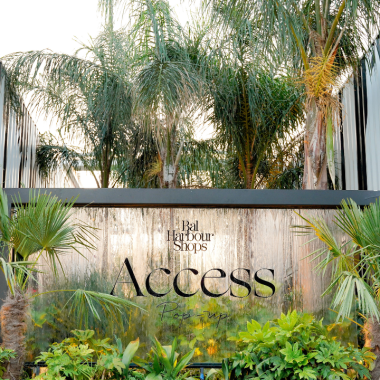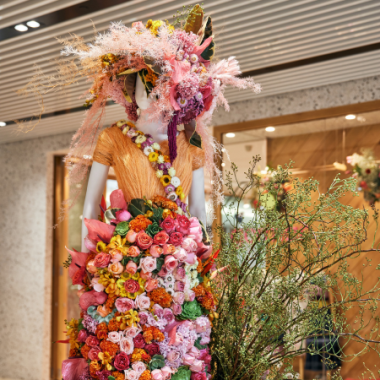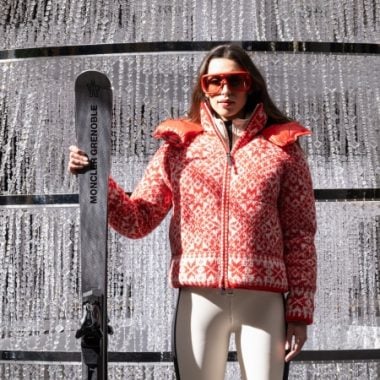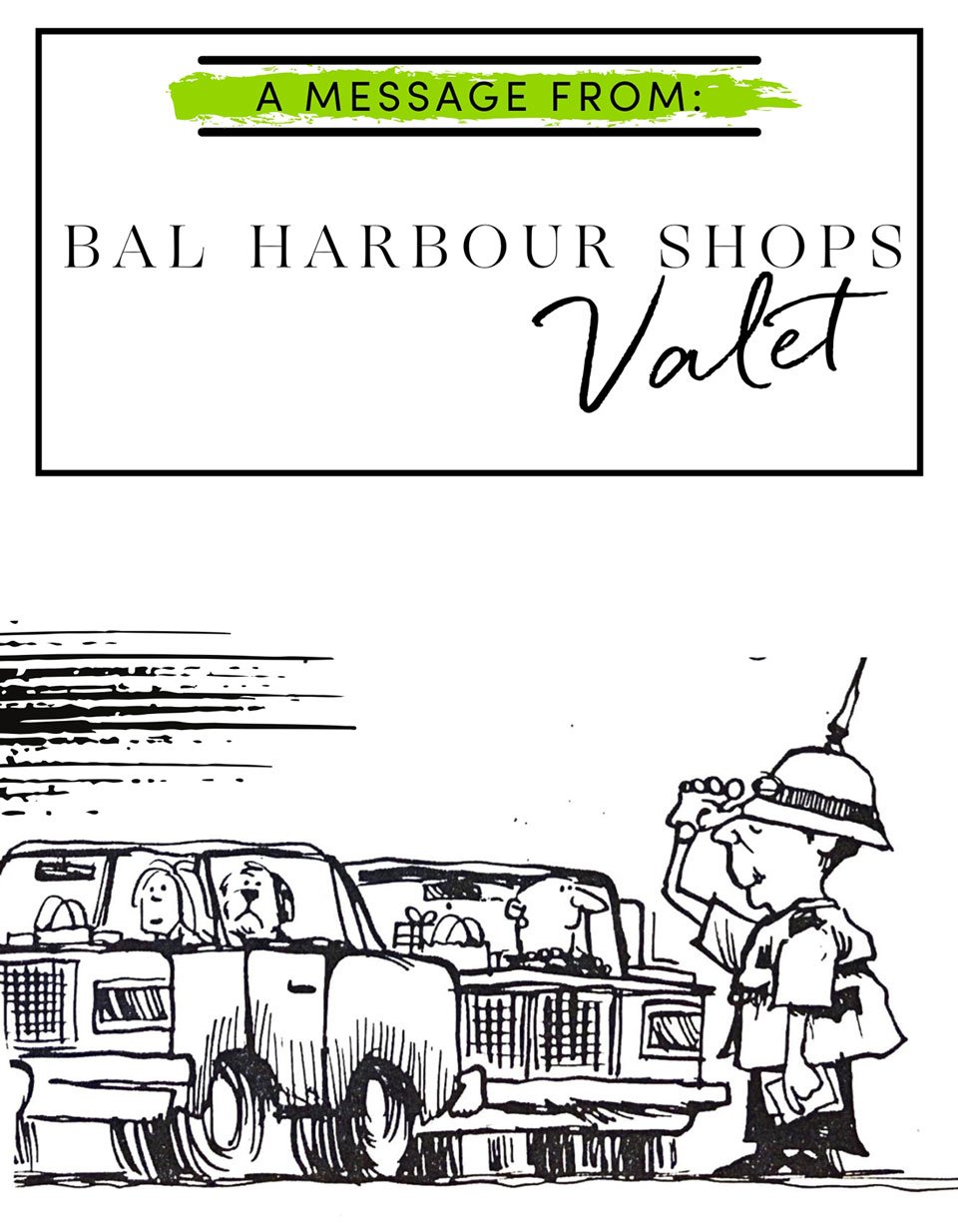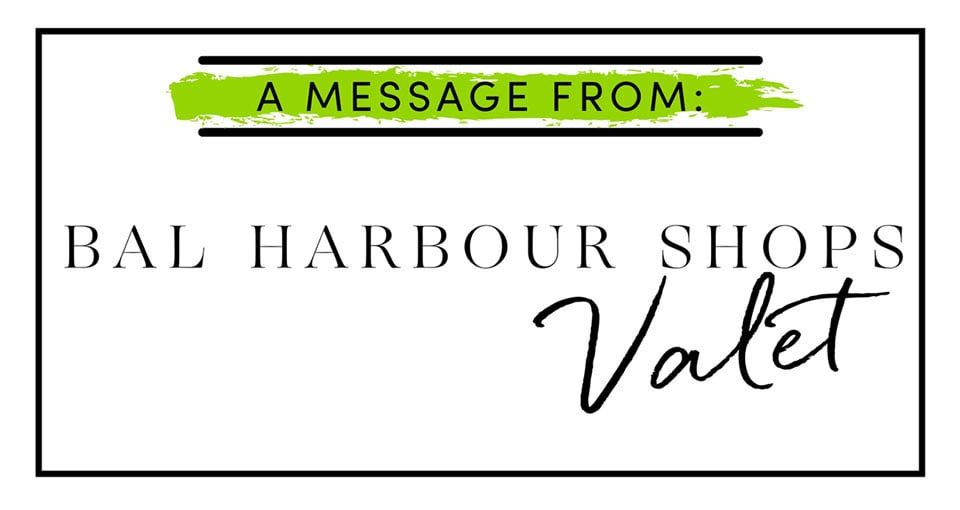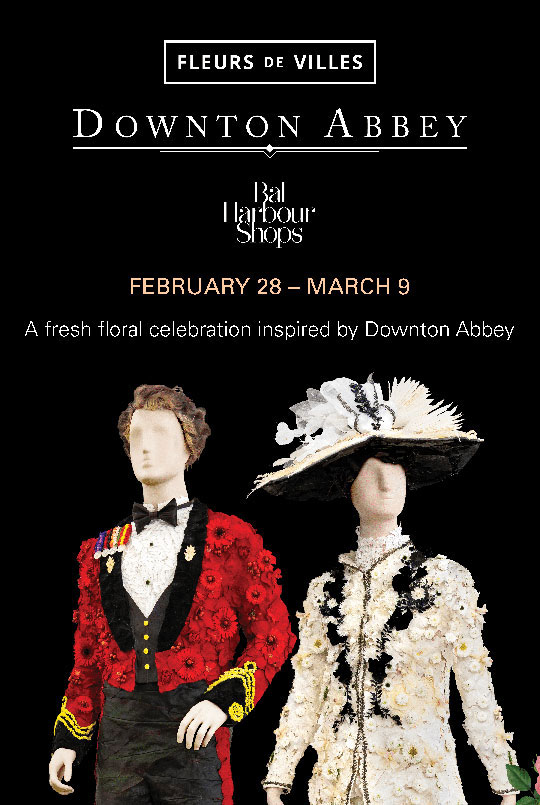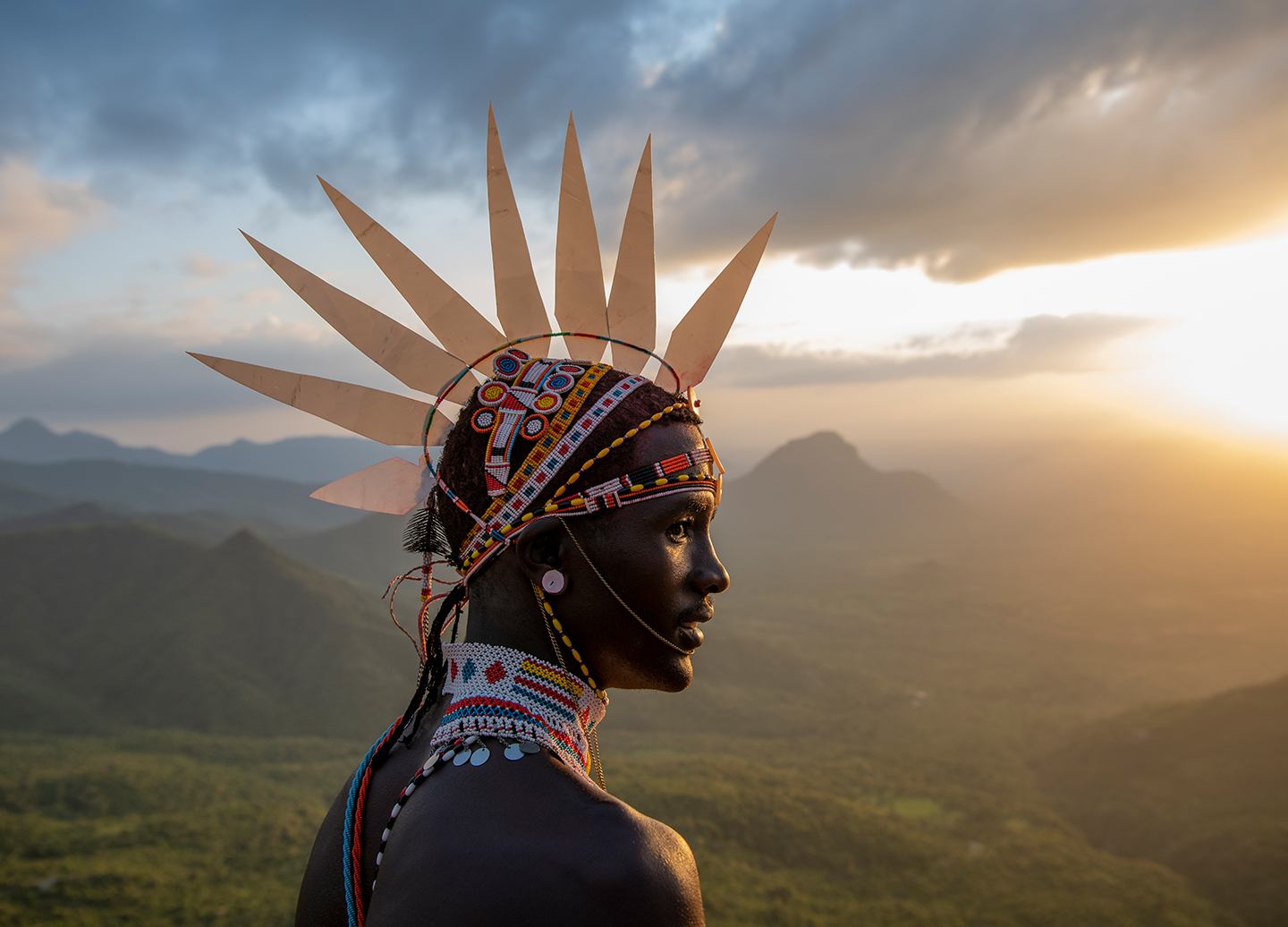
Samburu John Nkuus Leripe watches the sun rise over the Mathews Range in northern Kenya’s Namunyak Wildlife Conservancy.
Award-winning photographer and film maker Ami Vitale shares a series of photographs taken in Kenya, where Indigenous people are protecting their wildlife and habitats in an effort to transform the way humans relate to wild animals—and also to each other.
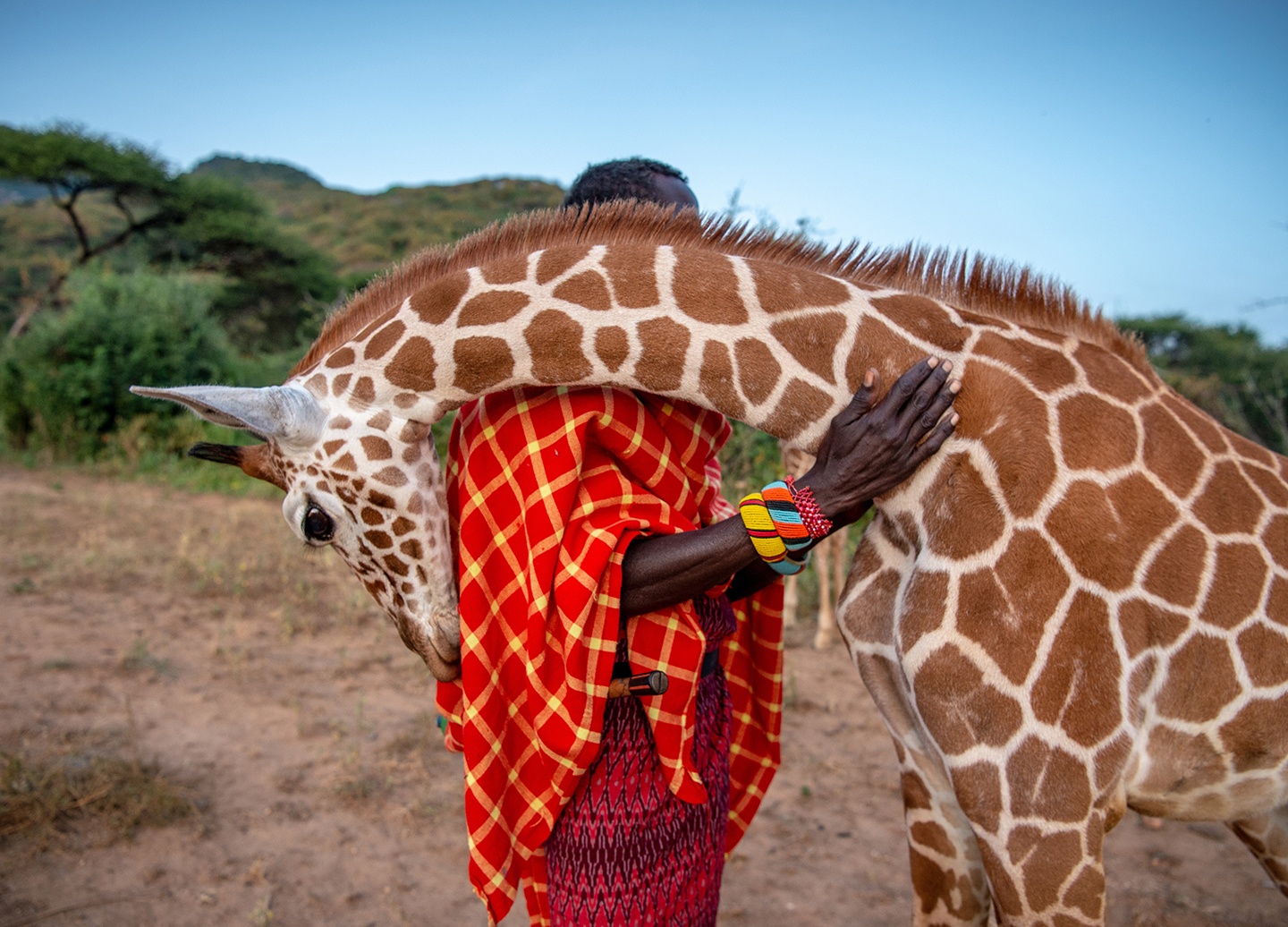
An orphaned reticulated giraffe, who was rehabilitated and returned to the wild, nuzzles Sarara Camp wildlife keeper, Lekupania.
This is a series of images about the relationships and bonds between humans and endangered species. The people depicted here understand how important our interconnectedness is for a healthy planet, not just with one another, but with the creatures we coexist with. We must begin to see our world as part of the natural world, the natural world as part of our world. Losing one part of nature is a loss for all of nature.
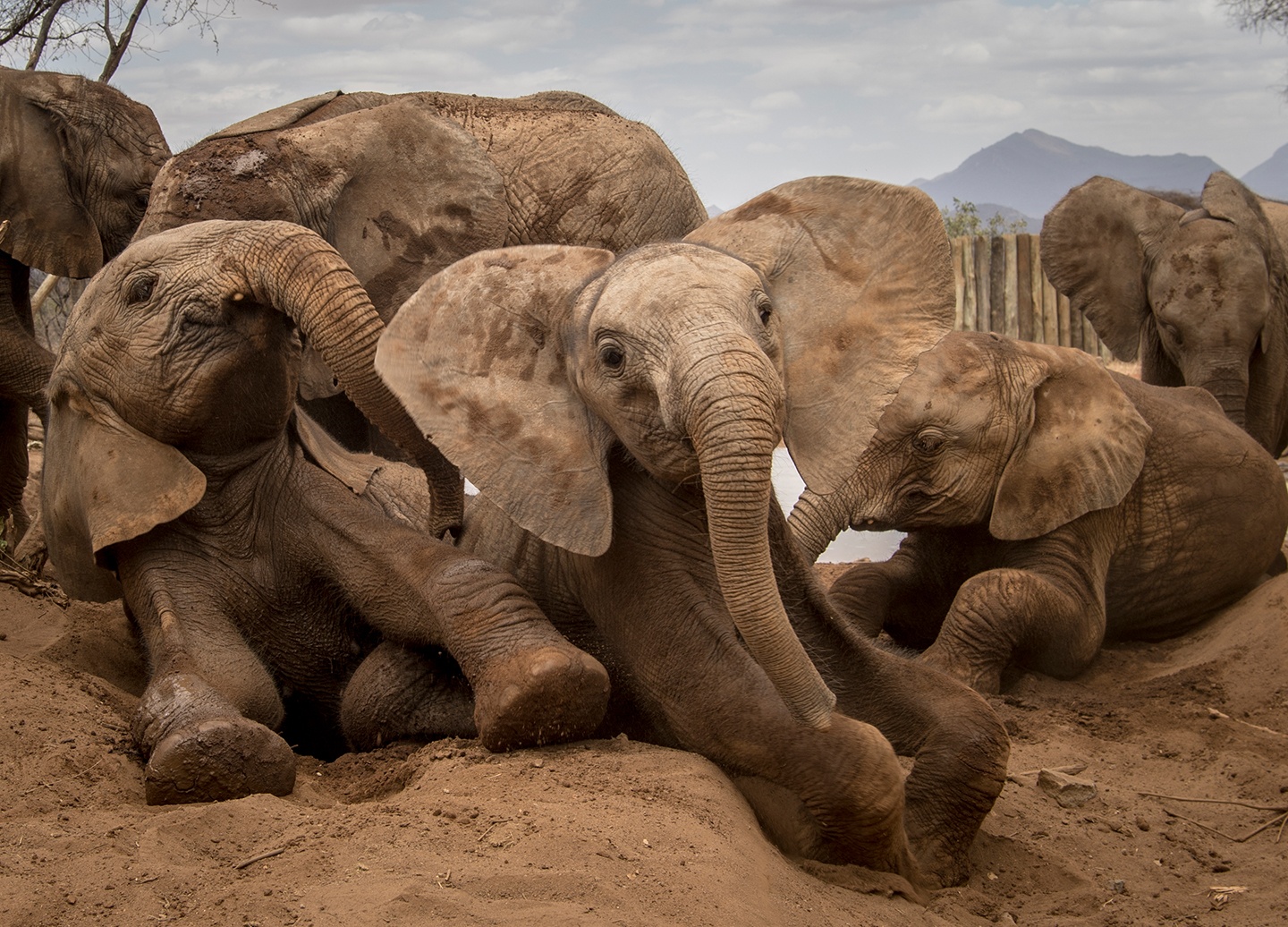
Mpala (center) with her friends enjoying some mud hole fun at northern Kenya’s Reteti Elephant Sanctuary.
Twenty years ago, much of this Kenyan landscape was empty of wildlife. Poachers had decimated the population of elephants and rhinos, species which are the ecosystem’s engineers. The loss of these keystone species had a ripple effect on other animals too: grazers like buffalo, endangered Grevy’s zebras, eland and oryx, as well as lions, cheetahs, wild dogs and leopards have all disappeared. Then, almost five years ago, the most remarkable thing happened: The Samburu people in this northern Kenya community created the first-ever community-owned and -operated elephant sanctuary in all of Africa and called it Reteti. What’s happening at Reteti is nothing less than the beginnings of a transformation—not only in the way humans relate to wild animals but also how we relate to one another.
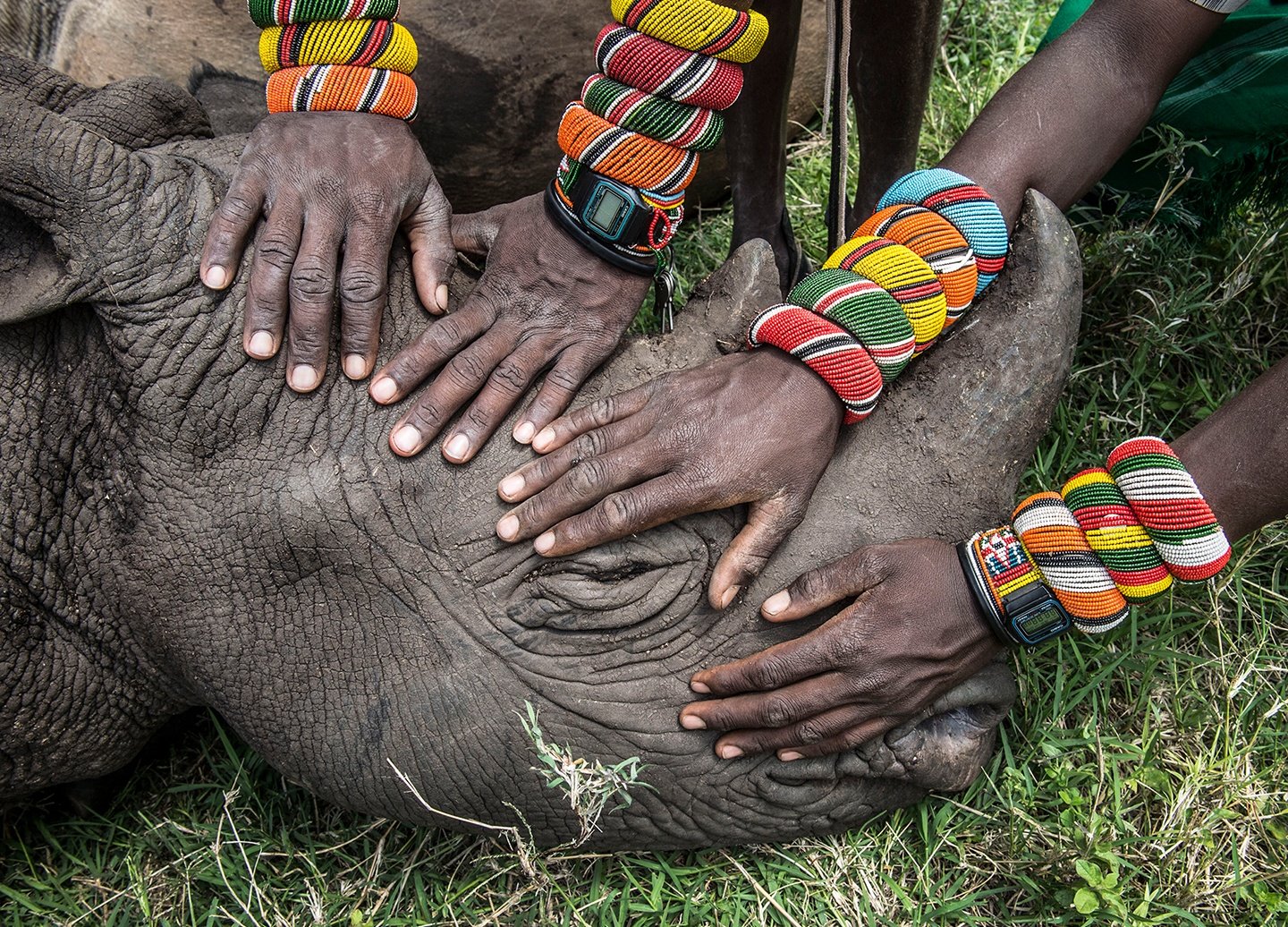
A group of Samburu warriors encounter a rhino for the first time at Lewa Wildlife Conservancy, 2014.
This oasis where orphans grow up—learning to be wild so that one day they can rejoin their herds—is a story as much about the elephants as it is about all of humanity. These are stories that remind us that nature is resilient, but that we have to give it a chance to succeed. Now the question is, how do we turn these incredible stories of success into a solution to the larger problem—the long-term survival of all endangered species, as well as the preservation of the ecosystems that sustain them?
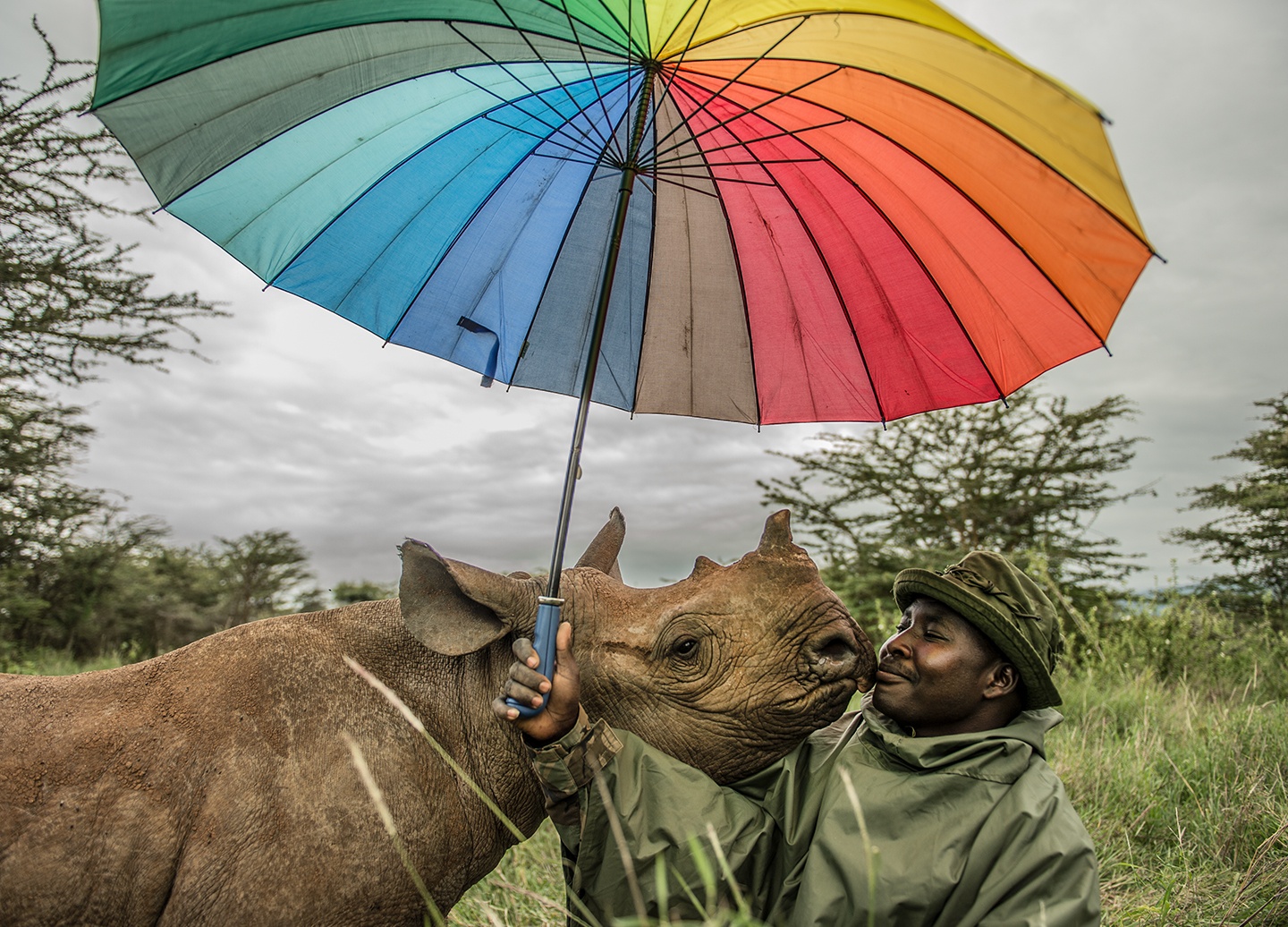
Kamara is nuzzled by a black rhino named Kilifi, who he hand-raised along with two other baby rhinos at Lewa Wildlife Conservancy in Kenya.
Today, nearly one million species are in danger of extinction due to exploitation, the climate emergency and habitat degradation. Our own health and destiny is intricately connected to these ancient species. Our fates are linked; without rhinos and elephants and other wildlife we suffer more than just a decline in the health of an ecosystem of which we are apart.
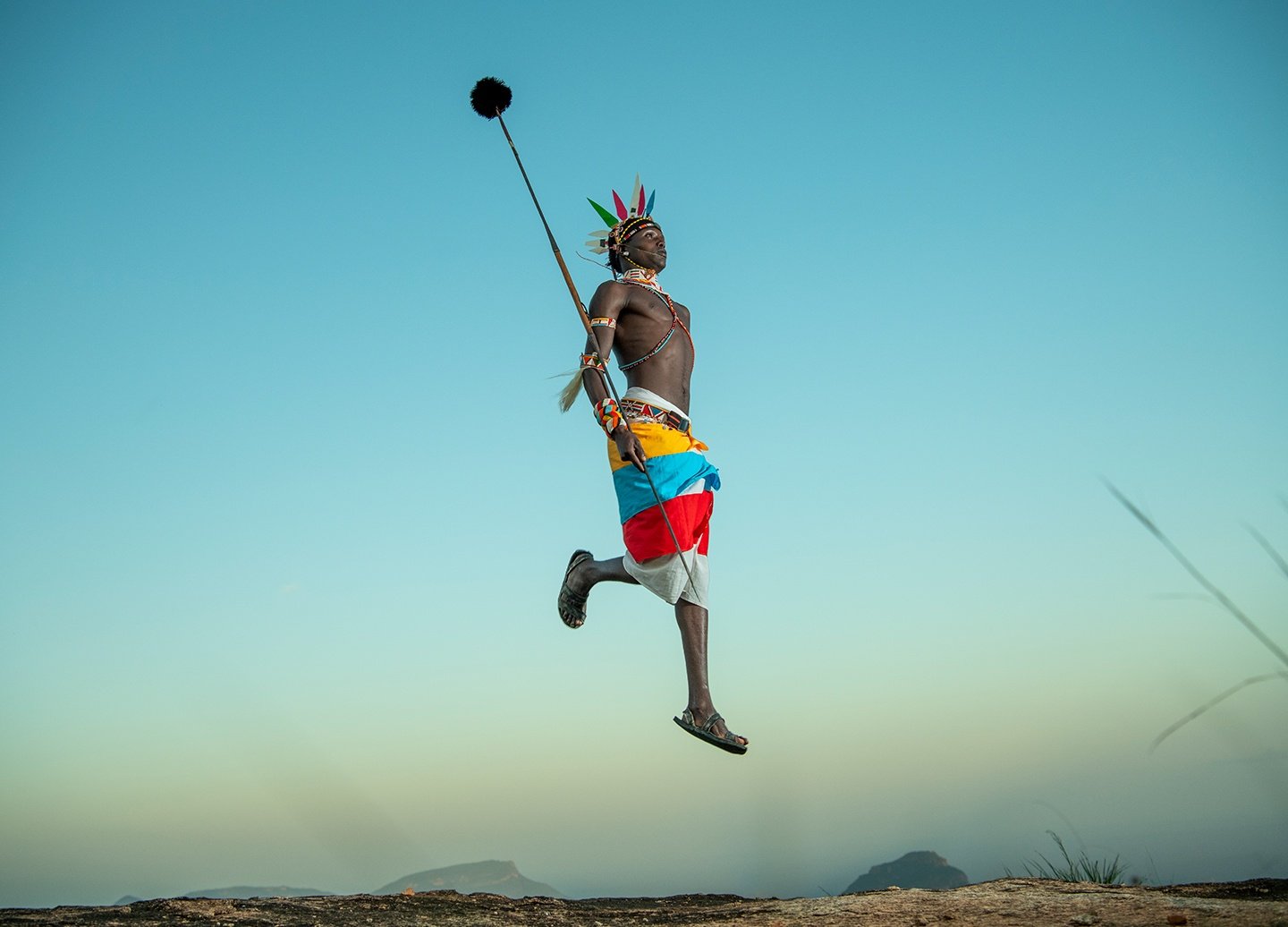
Samburu warrior Tom Lesuda at the top of northern Kenya’s Mathews Range, where the 850,000-acre Namunyak Wildlife Conservancy is situated.
We, and future generations, suffer a loss of imagination, a loss of wonder, a loss of beautiful possibilities. What happens next is in all of our hands. Our actions today will determine the future for generations after us. Nature is resilient if we allow it to be, and we owe it to future generations to give it that chance. —Ami Vital

